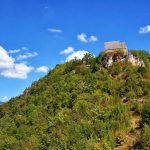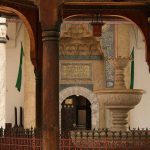Written by: Ivana Dukčević
Situated at the foot of Alborz mountain range, Iran’s capital with 13 million inhabitants is an hour drive away from Dizin and Shemshek ski resorts. In north Tehran, particularly around the Tadjrish square, steep alleys lined with stunning plane trees are dotted with rich people’s villas and enviable luxury car fleets.
Largest Collection of Diamonds
Teheran can boast quite a few imaginatively landscaped parks and interesting museums. Apart from the National Archaeological Museum containing collections from the most important periods of Iranian history and most important archeological sites: Ekbatan, Susa, Persepolis, Pasargadae, Tape Sialk, one should not miss visiting Tehran’s National Jewelry Museum housing the world’s second largest collection of diamonds and crown jewels after the Tower of London. The collection comprises the jewels, crowns and thrones of a number of Persian royal dynasties. Found in India and brought to Persia in the 17th century, the second largest cut diamond in the whole world – the Daryaye Noor diamond – which translates to the See of Light, is on display at the museum.
Other museums in Tehran have different collections to offer. Fans of Iranian film, one of the world’s most respectable cinematographies, will enjoy the wonderful ambiance of the Cinema Museum of Iran situated in one of the smaller palaces of the Qadjar dynasty in north Tehran. Further to the south, two other museums can attract one’s attention – the Carpet Museum of Iran and Tehran Museum of Contemporary Art built in mid 1970s and displaying a combination of antique Persian architectural elements and modernist style popular at the time. The museum, inaugurated by renowned Andy Warhol, still exhibits Warhol’s famous paintings – Mick Jagger, Mao Tse-Tung and Marilyn Monroe, which are on display on the ground floor also featuring one of the world’s largest contemporary art collections. Apart from Warhol, it includes artworks by Picasso, Degas, Van Gogh, Lichtenstein, and the largest collection of Jackson Pollock’s paintings. However, both inside and outside the museum, several sculptures made by Henry Moore, English sculptor and of the world’s greatest sculptors of the 20th century, as well as by Rene Magritte from Belgium can be seen in the garden. In his story published by The Guardian, a British daily newspaper, less than two years ago, the journalist noted that Tehran is sitting on a modern-art gold mine.

In the central part of the city, near the maze of Tehran’s Grand Bazaar, take a tour of the Golestan Palace complex, the last stronghold of Persian Qadjar dynasty, whose rulers moved the Persian capital from Isfahan to Tehran in the mid-19th century. Like many other palaces in Iran, this palace is most recognizable because of its walls and ceilings decorated in a flamboyant style featuring thousands of tiny mirrors embedded in them. During the middle ages, Persians imported Venetian glass mirrors. After traveling long distances by horse and camel for many days, a large number of mirrors would reach their destination in pieces. After a while, someone came up with the idea to put an end to this problem by cutting the mirrors into even smaller pieces. That is how it happened that a new fashion in decorating the royal chambers became popular.
Life and Art in City Parks
If you have time, in addition to visiting Laleh Park, Mellat Park featuring a big lake in the north section of the park where ducks and geese proudly strut around and a modern edifice made of glass – Mellat Park Cineplex – whose wave-like structure is home to galleries and movie halls, is also worth visiting. Just like the Turks and other nations of the East, Iranians seem to love picnics more than anything else, even though picnics do not always mean just going away from the city. In almost all the parks in Iran families get together spontaneously to at least have breakfast together, and most parks are remarkably well-kept.
Honar Park, located in the central area of Tehran, there are no picnic goers, but it is well-known for its interesting, modern sculptures. The central structure in the park features art galleries, cafés and a reputable vegetarian restaurant.
At the end of your visit to Tehran, walk by the famous Azadi Tower, a monument located in the city’s western suburbs, built in the early 1970s to commemorate the 2500th anniversary of the foundation of the Persian Empire, and then go to the northern part of Tehran to see the Milad Tower. It is much more than just the world’s sixth-tallest tower. Apart from a fantastic view of the whole city from the 400-metre tall tower, a large number of galleries and souvenir shops where young artists are selling paintings, works of art and jewelry are situated in the tower. On the top of the tower, there is a restaurant, and three floors below, there is a shopping center. On the ground floor, you can relax in a traditional pastry shop savoring delicious saffron ice cream sprinkled with pistachio crumbles, listening to the sound of water coming from several fountains in the lobby, and looking out the two windows at peacocks fanning out their feathers inside of a tropical garden as if they were in a mini-zoo. Outside the tower, at a plateau housing modern sculptures, there is another fountain playing a rhythm, and behind it there is a concert hall.
Late in the afternoon as the sun sets, the seemingly lifeless grayish Alborz mountain range, with snow-covered peaks at the beginning of May, is turning red in the north, while hundreds of Tehranis walk along the plateau or sit at the café over a cup of tea and cake.




